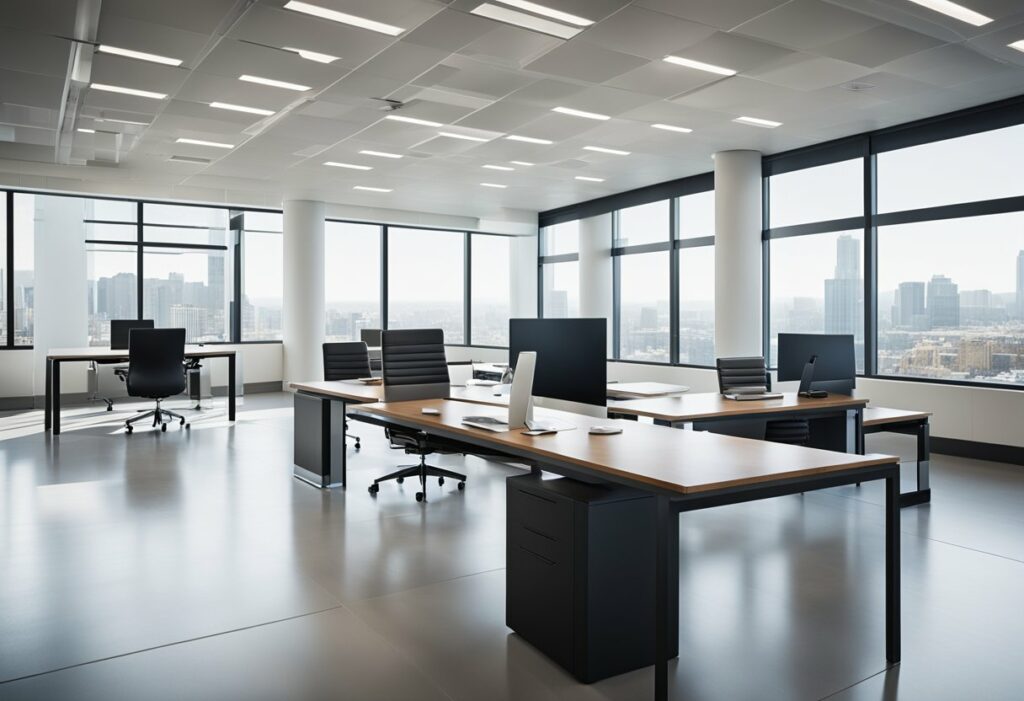Executive Office Design Trends: What’s New and Exciting in 2024
If you’re looking to create a modern, stylish, and functional executive office, you’ll want to stay on top of the latest design trends. Executive office design has evolved significantly over the years, from the traditional corner office to the modern open-plan workspace. Today, executives are looking for offices that are both functional and aesthetically pleasing.
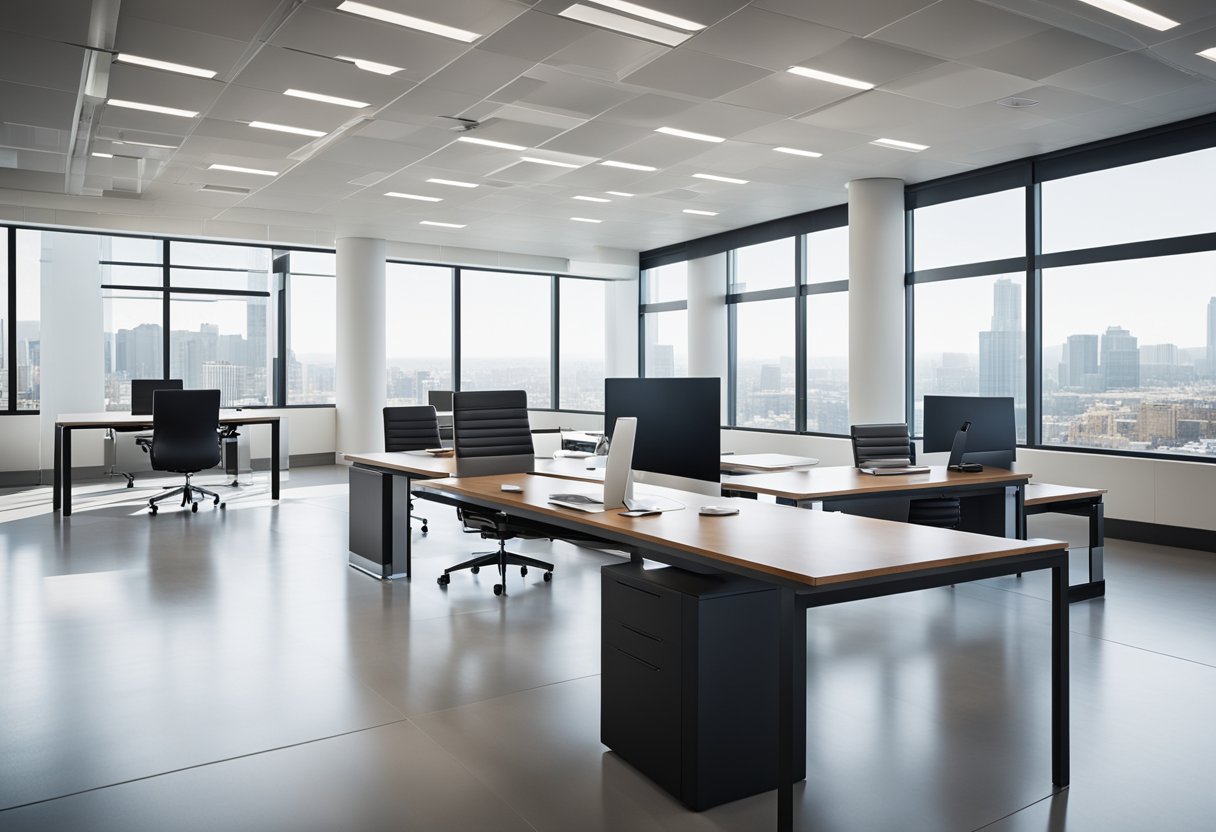
One of the key trends in executive office design is the move towards more flexible workspaces. With the rise of remote work and flexible schedules, executives need offices that can adapt to their changing needs. This means incorporating elements like movable walls, modular furniture, and flexible lighting that can be easily adjusted to create different work zones.
Another important trend in executive office design is the focus on sustainability. As more companies look to reduce their environmental footprint, executives are turning to eco-friendly materials and designs. This can include everything from energy-efficient lighting and HVAC systems to furniture made from recycled materials. By incorporating sustainable design elements into their offices, executives can create a space that is not only stylish and functional but also environmentally responsible.
Key Takeaways
- Modern executive offices need to be both functional and aesthetically pleasing.
- Flexibility is key in executive office design, with movable walls, modular furniture, and flexible lighting being popular choices.
- Sustainability is an important consideration, with eco-friendly materials and designs becoming increasingly popular.
Evolution of Executive Office Design
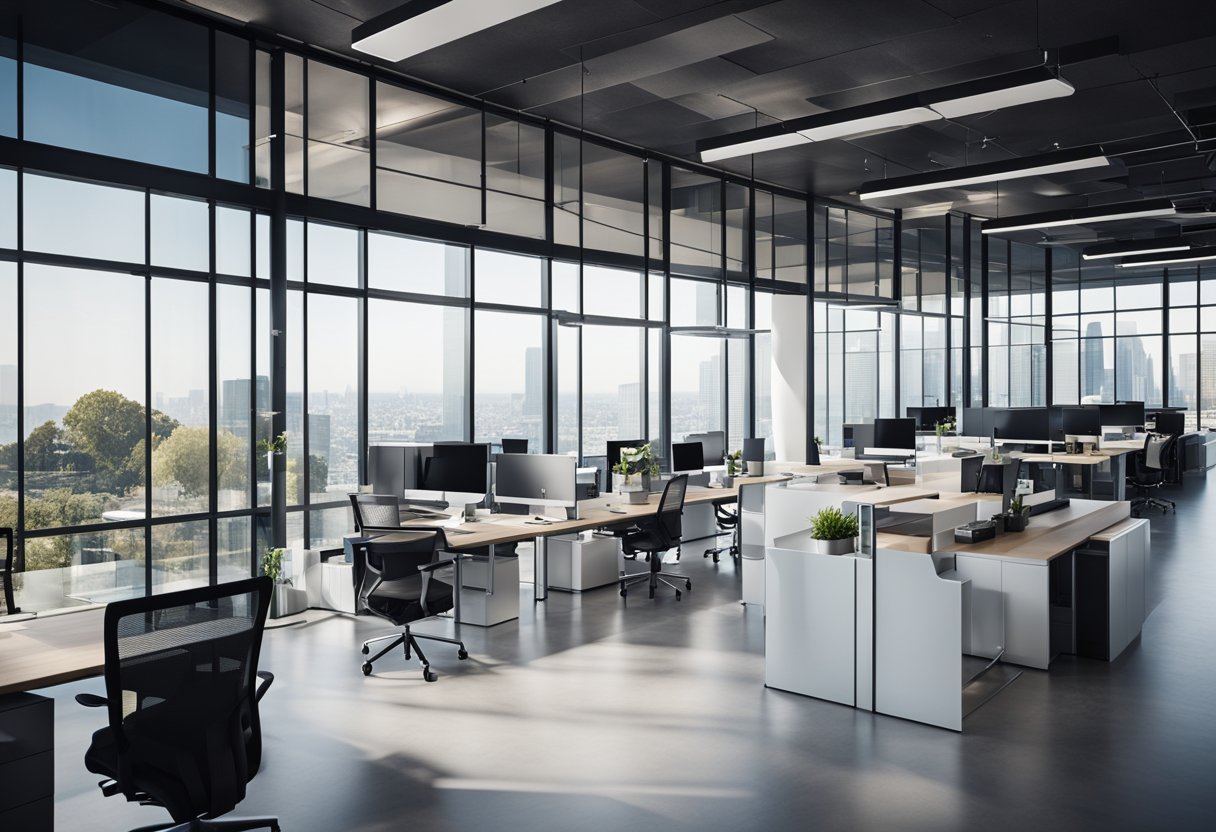
As the world becomes more competitive, organisations are looking for ways to improve their work environment to attract and retain top talent. One way to do this is by creating an executive office that is both functional and aesthetically pleasing. In this section, we will take a look at the evolution of executive office design and how it has changed over the years.
Historical Perspective
Executive offices were once designed to showcase the power and status of the executive. They were often large and grandiose, with expensive furnishings and artwork. However, over time, the focus has shifted towards creating a workspace that is more functional and conducive to productivity. This has resulted in a move towards more minimalist designs with a focus on simplicity and efficiency.
Influence of the Pandemic
The pandemic has had a significant impact on the way we work and has forced organisations to rethink their office design. Many companies have had to adopt remote working practices, and those that have returned to the office have had to implement social distancing measures. This has led to a shift towards more flexible and adaptable office designs that can accommodate changing work patterns and allow for remote working.
Shift Towards Sustainability
Sustainability has become an increasingly important consideration in executive office design. Organisations are looking for ways to reduce their carbon footprint and create a more environmentally friendly workspace. This has led to a focus on energy-efficient lighting, sustainable materials, and the use of plants to improve air quality and well-being.
In conclusion, executive office design trends have evolved significantly over the years, reflecting changes in technology, company culture, and a deeper understanding of how workspace design impacts employee productivity, well-being, and collaboration. By adopting a more minimalist, flexible, and sustainable approach to office design, organisations can create a workspace that is both functional and aesthetically pleasing, while also promoting work-life balance and efficiency.
Key Elements of Modern Executive Offices
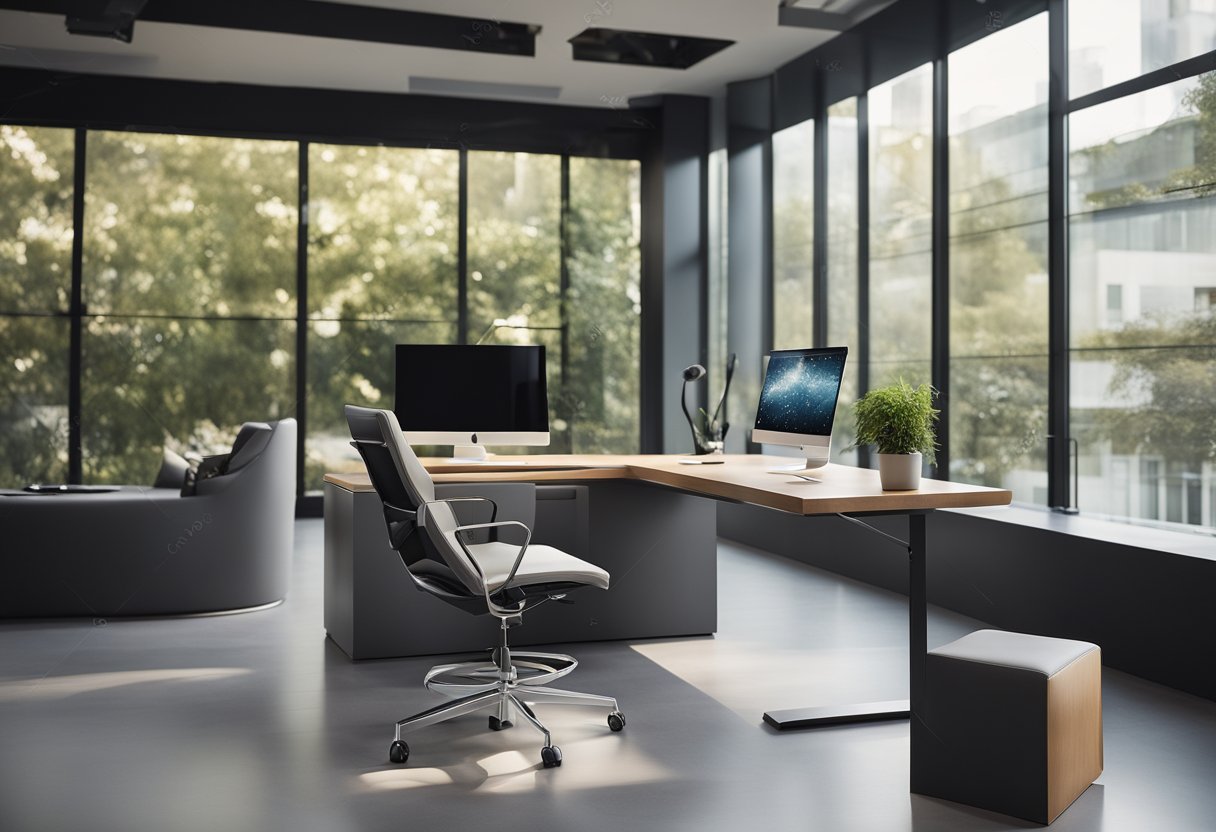
As an executive, your office design is a reflection of your status and company culture. Modern executive offices are designed to be functional, comfortable and visually appealing. Here are some key elements of modern executive offices that you should consider when designing your workspace.
Innovative Furniture and Layouts
Innovative furniture and layouts are key elements of modern executive offices. The furniture should be comfortable, functional and stylish. Ergonomic chairs and desks are essential for long working hours. A standing desk can also be a great addition to an executive office, promoting better posture and reducing the risk of health issues. Collaborative furniture like sofas and lounge chairs can also be used to create a more relaxed atmosphere for informal meetings.
The layout of the executive office should be designed with productivity and comfort in mind. The position of the desk, seating arrangements and storage solutions should be planned to maximise natural light and create an open and welcoming atmosphere.
Biophilic Design and Wellbeing
Biophilic design is a trend that is gaining popularity in modern executive offices. This design approach involves incorporating natural elements such as plants, water features and natural light into the office environment. Biophilic design has been shown to improve productivity, reduce stress and enhance wellbeing.
Plants are a great way to introduce biophilic design into your executive office. They not only improve air quality but also add a touch of greenery to the space. Natural light is also important for wellbeing, so consider installing large windows or skylights to bring in more natural light.
Smart Technology and Office Dynamics
Modern executive offices are also characterised by the integration of smart technology. This includes features such as voice-activated assistants, wireless charging and video conferencing. The integration of smart technology can improve office dynamics by streamlining communication and increasing productivity.
Ergonomic design is also an important consideration in modern executive offices. This includes features such as adjustable desks and chairs to promote good posture and reduce the risk of health issues.
In summary, modern executive offices are designed to be functional, comfortable and visually appealing. Innovative furniture and layouts, biophilic design and smart technology are key elements that are incorporated into modern executive office design. By incorporating these design elements into your workspace, you can create an environment that promotes wellbeing, productivity and comfort.
Frequently Asked Questions
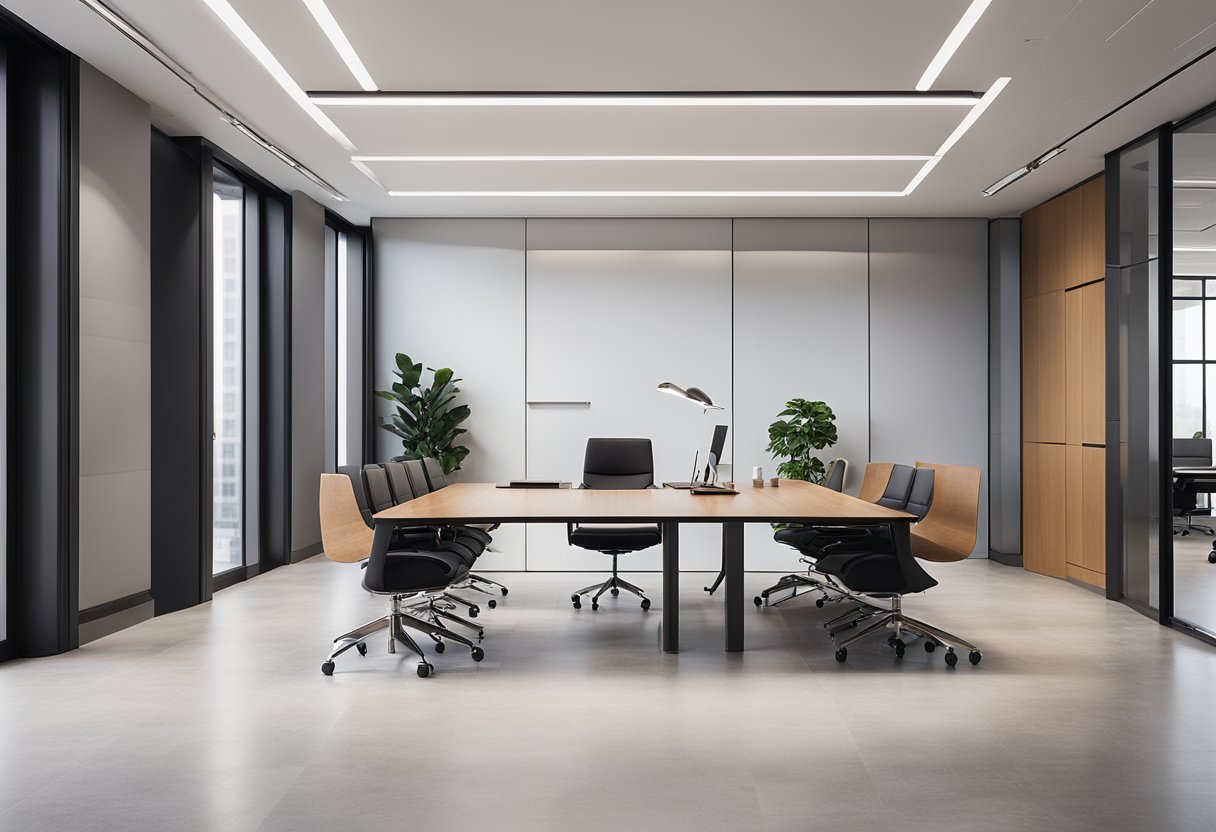
What are the latest innovations in executive office layouts for 2024?
In 2024, executive office layouts are moving towards a more open and collaborative design. This means that private offices are becoming less common, and instead, there is a trend towards open-plan spaces with designated areas for focused work, meetings, and collaborative work. Additionally, the use of technology such as video conferencing and virtual reality is becoming more prevalent in executive office design.
How can you infuse luxury and sophistication into a modern CEO’s office design?
To infuse luxury and sophistication into a modern CEO’s office design, you can incorporate high-end materials such as leather, marble, and wood. Additionally, consider adding statement pieces such as a unique desk or artwork to add personality to the space. Lighting is also important in creating a luxurious and sophisticated atmosphere, so consider using warm lighting and accent lighting to highlight key features.
What are the top considerations for designing a small but impactful executive space?
When designing a small but impactful executive space, it is important to focus on functionality and minimalism. Consider incorporating multi-functional furniture, such as a desk with built-in storage, to maximise space. Additionally, using light colours and natural light can help make the space feel larger and more open. Finally, adding a few carefully selected decorative elements, such as artwork or a statement piece of furniture, can add personality and interest to the space.
How do you combine functionality and style in a contemporary executive office?
To combine functionality and style in a contemporary executive office, it is important to focus on clean lines and minimalism. Consider incorporating multi-functional furniture, such as a desk with built-in storage, to maximise space. Additionally, using neutral colours and natural materials such as wood and stone can create a modern and stylish look. Finally, adding a few carefully selected decorative elements, such as a unique desk lamp or a piece of artwork, can add personality and interest to the space.
What are the most exciting colour schemes and materials for executive offices this year?
This year, there is a trend towards using natural colours and materials such as wood, stone, and leather in executive office design. Additionally, there is a move towards using bold accent colours such as deep blues and greens to add interest and personality to the space. Finally, metallic finishes such as brass and copper are becoming more popular as a way to add a touch of luxury to the space.
How can one personalise an executive office while maintaining professional elegance?
To personalise an executive office while maintaining professional elegance, consider incorporating personal touches such as family photos or artwork that reflects your personality and interests. Additionally, using statement pieces such as a unique desk or a piece of artwork can add personality and interest to the space. However, it is important to balance personalisation with professionalism, so avoid clutter and keep the overall design clean and minimalistic.

